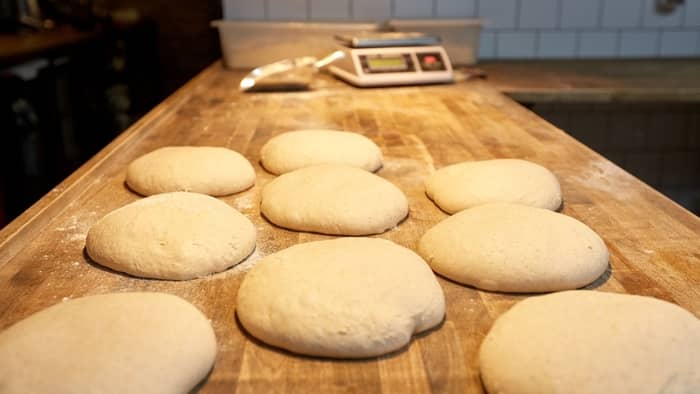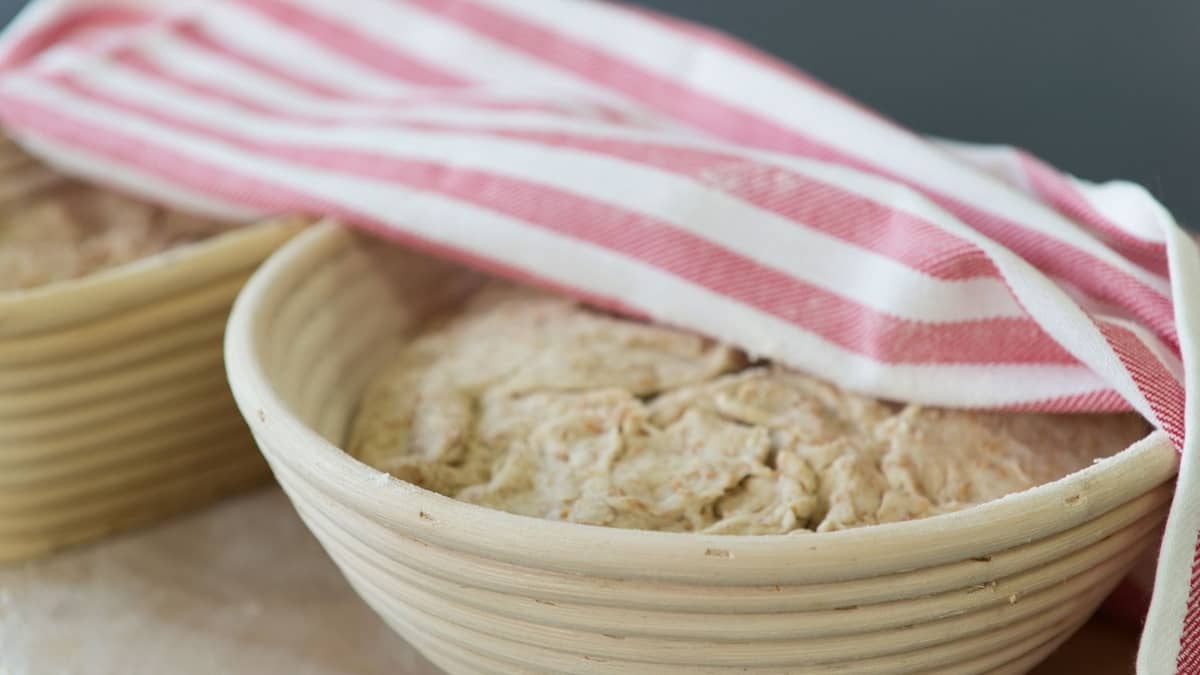Last Updated on March 6, 2022
Did you know that it is essential to understand how to make dough rise faster? Your dough needs to rise sufficiently to create a light and airy bread. In addition, prevent a heavy and inflexible bread texture; that is why the leavening agent makes the dough rise by creating air pockets inside your dough.
And to make your dough rise faster, an optimal environment is necessary for air pockets formation. It may be hard to achieve the best conditions to make your bread dough rise as the weather gets cold.
Also, please note that a quick or fast dough rise is not always best, as a slow dough rise allows the flavors to develop more. Likewise, to make your yeast flourish in your dough, you need to meet two conditions: moisture and warmth; the moisture and humidity can differ from day to day and season to season. So, if your house is humid, you can expect that your dough will rise faster.
How To Make Dough Rise Faster
First and foremost, how can I speed up the rise of dough? In general, there are different techniques you can consider to speed up the rise of your dough. Here are some methods that you can find helpful.
Leavening agents
Remember that using a leavening agent can help your dough rise faster. Baking soda and baking powder are agents often used to make cakes and quick bread.
Moreover, keep in mind that yeast is the primary leavening agent used in making bread and pizza dough. These leavening agents cause chemical reactions that create gas to form air pockets. Also, note that the rapid rise is modified yeast to activate the chemical reaction faster.

Heat
While leavening agents cause the dough to rise slowly to room temperature. The moister dough needs a warm setting temperature to speed up the process.
So, to speed up the dough’s rise, place it over a pan of warm water inside a microwave or warm oven once or twice at low power for about twenty-five seconds. But, ensure that your dough is below 250 degrees Fahrenheit or your dough will start to cook.
Faster proofing
Essentially, when utilizing active dry yeast, you have to proof or activate it. To do so, add your active dry yeast in warm water about 110 to 115 degrees Fahrenheit. Avoid using water above 125 degrees Fahrenheit as it may kill the yeast.
Also, to speed up the proofing process, add a pinch of sugar to your warm water. The main reason is that the yeast feeds on the sugar. As a result, it produces carbon dioxide gas a lot quicker.
Next, add 3/4 teaspoon of apple cider vinegar for every 3 cups of flour when mixing your dough. Then, allow your dough to rise and double in size at a warm location and cover it. After that, put it next to a cup of hot water inside the microwave. Afterward, heat on low for about 3 minutes. And finally, let your dough rest for about 3 minutes and heat again.
Covering your dough
As the carbon dioxide forms, your dough expands. If the surface of your dough becomes dry and the crust forms, stopping the rising of your dough. Lightly coat the top of your dough with vegetable oil and cover it with plastic wrap or a moist towel to allow your dough to rise freely.
Moreover, how do I make dough rise in 20 minutes? Please consider that the dough requires time to proof and rise. And if you are trying to make your dough rise in 20 minutes, you can use Rapid-rise yeast to make your dough rise faster.
First, use your rapid-rise yeast packets that come in smaller granules, and it activates faster than other yeast; bear in mind that quicker yeast activation makes dough rise faster.
Rapid-rise yeast is also called instant yeast and quick-rise yeast. Next, mix your rapid-rise yeast packet with your dry ingredients for making dough.
Moreover, rapid-rise yeast does not require dissolution in water; mix it with your flour and other ingredients. Then, be sure to check your dough recipe to know how many packets to use.
Afterward, skip the first rise and begin shaping your dough after kneading. If your recipe calls for two rises, only do the second one. Likewise, the dough only needs to rise once you make it with rapid-rise yeast; keep in mind that leaving out the first rise will shorten your total rise time in half.
Then, allow your dough to rise once before baking. Lastly, place your dough in a warm and humid spot to help it rise faster. You can also consider that lean dough is made mainly with water, and flour increases quicker than doughs with dairy, eggs, and fats.
(14×6 inch) Oval Proofing Basket Set by Bread Story Oval Banneton Brotform
Time It Takes For Dough To Rise
Generally, how long does dough take to rise? In most cases, there is no particular easy answer to how long the dough takes to rise because many factors contribute to the rate of yeast fermentation that causes the production of carbon dioxide gas that will result in the rising of the dough.
However, the most significant factor is the temperature. In general, the lean dough with an average moisture content used in making pizza and bagels needs an ideal fermentation temperature of about 80 degrees Fahrenheit or 27 degrees Celsius.
In a home kitchen setting, it may be hard to control the fermentation of the dough. Its temperature will depend on the water’s temperature used to make it and the room temperature. Also, if your kitchen or working station is cool, your dough will become cool even when you use warm water to make it.
So, if you keep your dough at around 80 degrees Fahrenheit, it should take about 1 to 1 1/2 hours to rise or double in size.
Ways To Make Pizza Dough Rise Quicker
How to make pizza dough rise faster? There are times that luck is not on your side, and you need to make your pizza dough rise faster. At times, it may not be advisable to rush your pizza dough, but here are some tricks that can help you do so.
Using more yeast and sugar
When proofing your dough, the yeast consumes sugar and produces the gas to make your dough rise. And when you add more yeast and sugar to your recipe, it will allow more fermentation. As a result, it creates more gas. That is why ensure that your temperature is above 68 degrees Fahrenheit for optimum growth.
Placing your dough in a warm place
Fermentation of yeast increases in high and humid temperatures; that is why you should place your dough in a warm place. Doing so will add warmth and moisture to your dough. Likewise, you can look for a warm spot in your house like your kitchen, on top of your water boiler, or heating unit.
You can also cover your bowl with a damp kitchen towel to add moisture. Ensure that you never put your dough in a spot with a temperature exceeding 122 degrees Fahrenheit or it will kill the yeast.
Consequently, if your dough becomes too warm, your dough will proof unevenly, and the outer parts will proof faster than the inner core.
Putting your dough in the oven
In most cases, professional bakers use a proofing box to let their dough rise consistently. So a home oven has a minimum temperature that may be too high to be used as a proofing box.
Although, there are ways that you can use in proofing your dough and turning the oven on high for about a minute and allowing it to remove the chill off the air. Because of that, you may use your oven thermometer to ensure that the temperature is below 100 degrees Fahrenheit.
And you may turn the light on the oven for extra heat. Next, fill a shallow pan with boiling water and place it in the bottom of your conventional oven. Then, place your pizza dough on a baking sheet and put it on the shelf above. Remember, close your oven door and wait until the dough rises.
Putting your dough in the microwave
Before anything else, make sure to fill a microwaveable cup with water and heat it on high for about a few minutes until it boils. Then, place your dough inside the microwave with a cup of water. If there is a need to reheat, remove the dough and repeat the process earlier.
Read more about Can You Over Knead Dough?
FAQs
How Can I Speed Up The Rise Of Dough?
Please remember that there are indeed various methods that you may apply to speed up your dough's rise; these include leavening agents, heat, and covering your dough.
How Do I Make Dough Rise In 20 Minutes?
To do this, you may utilize a rapid-rise yeast to make your dough rise quicker. In addition to that, please keep in mind that your dough typically needs sufficient time to rise and proof.
How Long Do Dough Take To Rise?
For the most part, if you keep the dough at approximately eighty degrees Fahrenheit, it may take the dough 1 to 1 and 1/2 hours to double in size.
How To Make Pizza Dough Rise Faster?
Most of the time, you should never rush the pizza dough. That is why it would help use more yeast and sugar. Not only that, but also you may place your dough in a warm location, like putting it in the microwave or oven. Also, it is okay to cover your bowl with a damp kitchen towel. Doing so will provide moisture.

Zarah is an experienced pastry chef whose creations have delighted countless customers. With a passion for baking, Zarah has developed a unique style that combines classic techniques with modern flavors. Her desserts are consistently crafted with the finest ingredients, and her attention to detail is evident in the stunning and delectable results. Zarah has a wealth of experience in the pastry kitchen, and loves to share her knowledge with others. Whether it is teaching a class or creating a custom cake for a special occasion, Zarah is committed to making sure every customer is satisfied.


